IK Multimedia Syntronik | HONEST Review (2021)
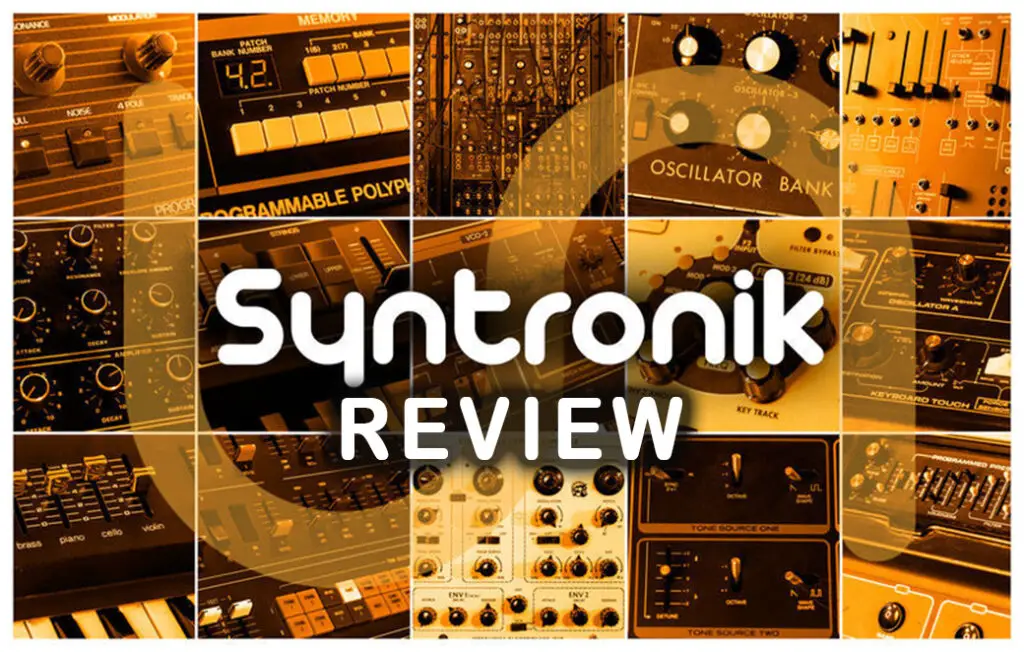
The modern era of music production has brought us countless digital, pristine-sounding VST synths. Plugins such as Serum have noticeably “clean”, digital oscillators, making them perfect for todays electronic genres.
However, many producers often seek out plugins that re-create the vintage, analog sound of yesteryear. Software emulations of classic hardware synthesizers are particularly popular, as they allow you to access the warm, retro character of these synths within the comfort of your DAW.
Many of these vintage emulation plugins attempt to re-create one specific synthesizer. Therefore if you’re looking to build a collection of retro VST synths, things can get fairly pricey.
IK Multimedia’s Syntronik offers an alternative solution. This gigantic synth collection recreates the unique sounds of 44 legendary hardware synthesizers and string machines, all packaged into a single VST plugin.
So let’s take a closer look at whether this synth powerhouse lives up to the hype, and whether it compares to similar vintage synths collections on the market.
The Engine
Syntronik has a dark, sleek, incredibly simple interface that is separated into 4 columns. The first column allows you to select the vintage synthesizer you want to emulate.
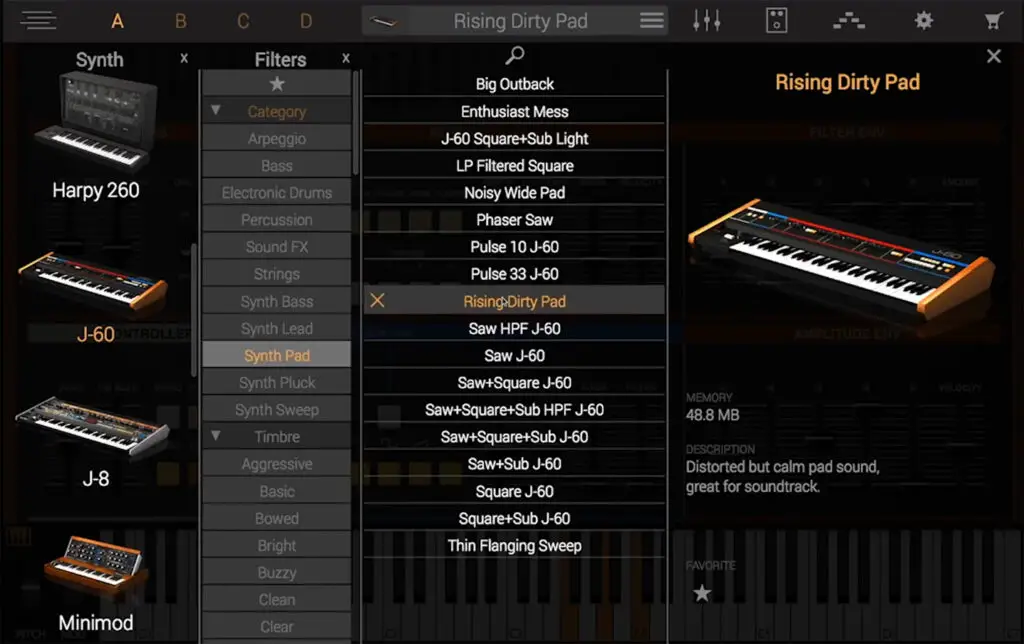
Within this column you’ll notice some of the most iconic vintage synths ever created, for example:
• J-60 – This option is presumably modeled after the classic Roland Juno-60, a programmable 6-voice polyphonic analog synthesizer from the 80’s.
• OXa – This synth is modeled after the OB-Xa, a hugely iconic synth behind Van Halen’s hit ‘Jump’ and albums by Prince, Queen and more.
• SEM – This option is modeled after the Oberheim SEM – one of the world’s first self‑contained synthesizer modules.
• Pro-V – Based on Sequential Circuits Prophet-5, Prophet-10.
… as well as many more incredible options to choose from! (A full list of the available synths can be found here).
The next column allows you to filter the synth presets according to a range of criteria. This is an absolutely essential component of the Syntronik interface, as it helps you navigate the thousands of individual sounds and presets that this synth offers.
Similar filter-based browsers can be found in other large synth collections such as Arturia’s Analog Lab V. However, this is where IK Multimedia go above and beyond with their GUI design. As you would expect, Syntronik allows you to filter sounds by standard categories such as brass, bass, pads, strings etc. In addition to this, you can filter by a range of filter types, such as Timbre (aggressive, edgy, mellow, resonant, etc.), Style (analog, futuristic, lo-fi, etc.) and Genre (Ambient, Dance, Dubstep, etc.) and more.
This filter design makes it incredibly easy and intuitive to find the sounds you’re looking for. It also makes the synthesizers feel more accessible, as it removes the need to search through every single preset to find the right sound for your track.
The third column is where you can select individual synth presets. Sytronik has 80GB of content, 2,600 instrument presets, over 120,000 high-quality samples, which is a mind-blowing amount of options to choose from. The final, right-hand column displays some basic information about the selected synth.
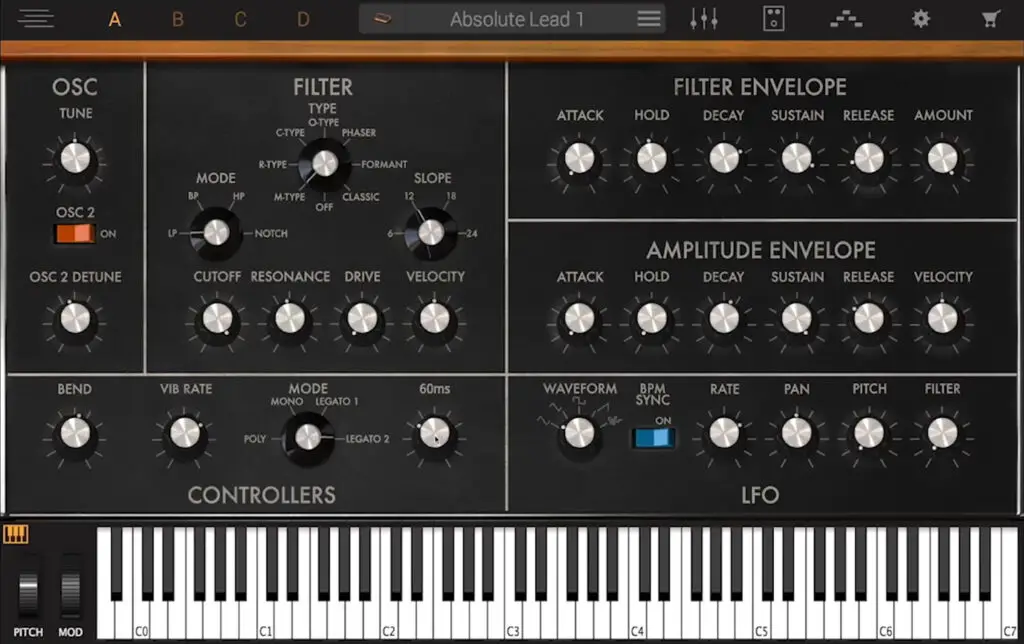
Meet the Family
In addition to the staggering amount of presets, each synth can be controlled within the Syntronik interface.
First of all, it’s worth mentioning that each synth module doesn’t replicate the exact physical layout of it’s hardware equivalent. Many VST synth emulations out there are designed to model the precise layout of the actual synth itself, whereas Syntronik takes a slightly different approach.
Each synth has the familiar look and feel of the original hardware synthesizer, but the controls and parameters are laid out to suit the proportions of the Syntronik plugin. Personally, this isn’t an issue for me. Clearly IK Multimedia have sacrificed some of the GUI’s accuracy in favour of more intuitive, plugin-based layouts. Having said that, if you are a long-time user of any of the original hardware synths within the Syntronik collection, the differing designs may take some getting used to.
Overall, each synth panel is incredibly beginner-friendly, while still offering more than enough functionality to keep advanced producers busy.
Additional Features
Syntronik allows you to load 4 separate synth patches at once using the A, B, C and D panels. This is really nice touch by IK Multimedia as it gives you the option to build unique, layered sounds.
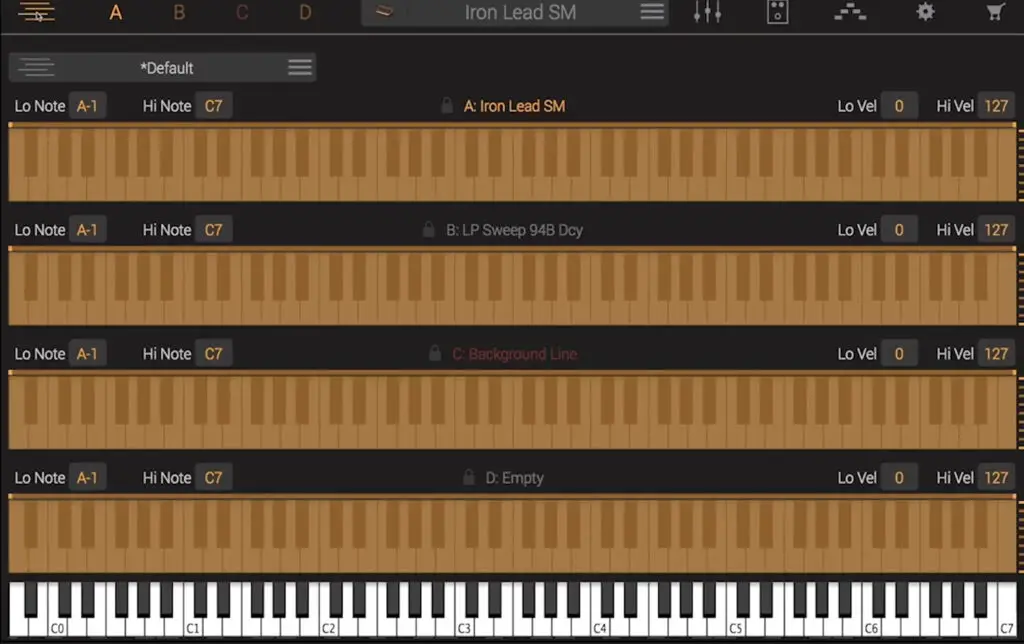
The plugin also has a Keyboard Layers window (above). This allows you to split your MIDI keyboard in relation to the A, B, C and D panels. For example, you can create a lead synth sound patch and then map it to the upper section of your keyboard, and map a bass patch to the lower keyboard notes as well.
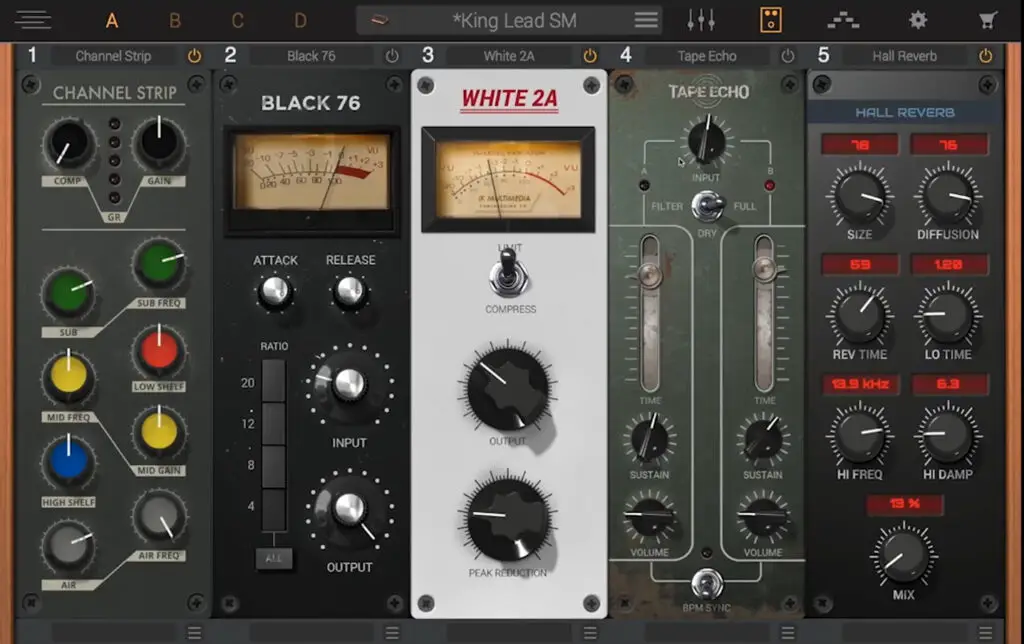
Syntronik also has a incredibly useful effect rack module (above) in which you can add and finetune individual effects such as reverb, modulation, various distortion effects, delays and more. The individual effect slots are taken directly from T-RackS 5, IK Multimedia’s acclaimed effects rack collection. Like the rest of Syntronik, the effects rack is highly intuitive, allowing you to move around the effects within the module.
Plus, because they are taken from dedicated effects plugins, the sound quality is absolutely fantastic.
Finally, the built-in step sequencer lets you design sequences up to 32-steps, in case you’re looking to build some arpeggiated sounds.
How Does It Sound?
In regards to the sound quality of Syntronik, I found the majority of the synths to be extremely impressive and authentic to the original instruments.
Syntronik makes it incredibly easy to recreate vintage, analog-esque sounds, and the synths have an undeniable warmth and analog character that is reminiscent of retro sounds from the 70s and 80s.
My personal favourites from the collection are the incredibly faithful emulations of Roland’s Juno-60 and Jupiter-8. These are two of the most iconic, coveted synthesizers of all time, and Syntronik captures their vintage tone and character perfectly.
When scrolling through the seemingly endless sounds with Syntronik, you can instantly tell that a lot of care and perfectionism has gone into the modeling and sampling of each synth.
Plus, by utilising the various effects within the effects rack module, it’s possible to create some truly unique, vintage sounds.
IK Multimedia have included sound demos of each synth on their website, so click here if you want to hear them in action.
To Conclude
Aside from the great sound quality and feature list, Syntronik stands out as one of the most inspiring synth collections I’ve ever used.
Syntronik feels like a portal into the forgotten world of hardware synths. Upon opening the plugin, you are invited into a vast universe of spacious pads, warm basses, glistening leads and almost any vintage sound you can think of.
If you have an interest in retro sound design, or just want to emulate classic synthesizers from the comfort of your DAW, Syntronik provides enough creative inspiration to last a lifetime.
Features
Ease of Use
Value for Money
Syntronik Deluxe is currently €399. For more information, check out this product on IKMultimedia.com

IK Multimedia Syntronik Review: Similar Articles
IK Multimedia SampleTank 4 | HONEST Review
